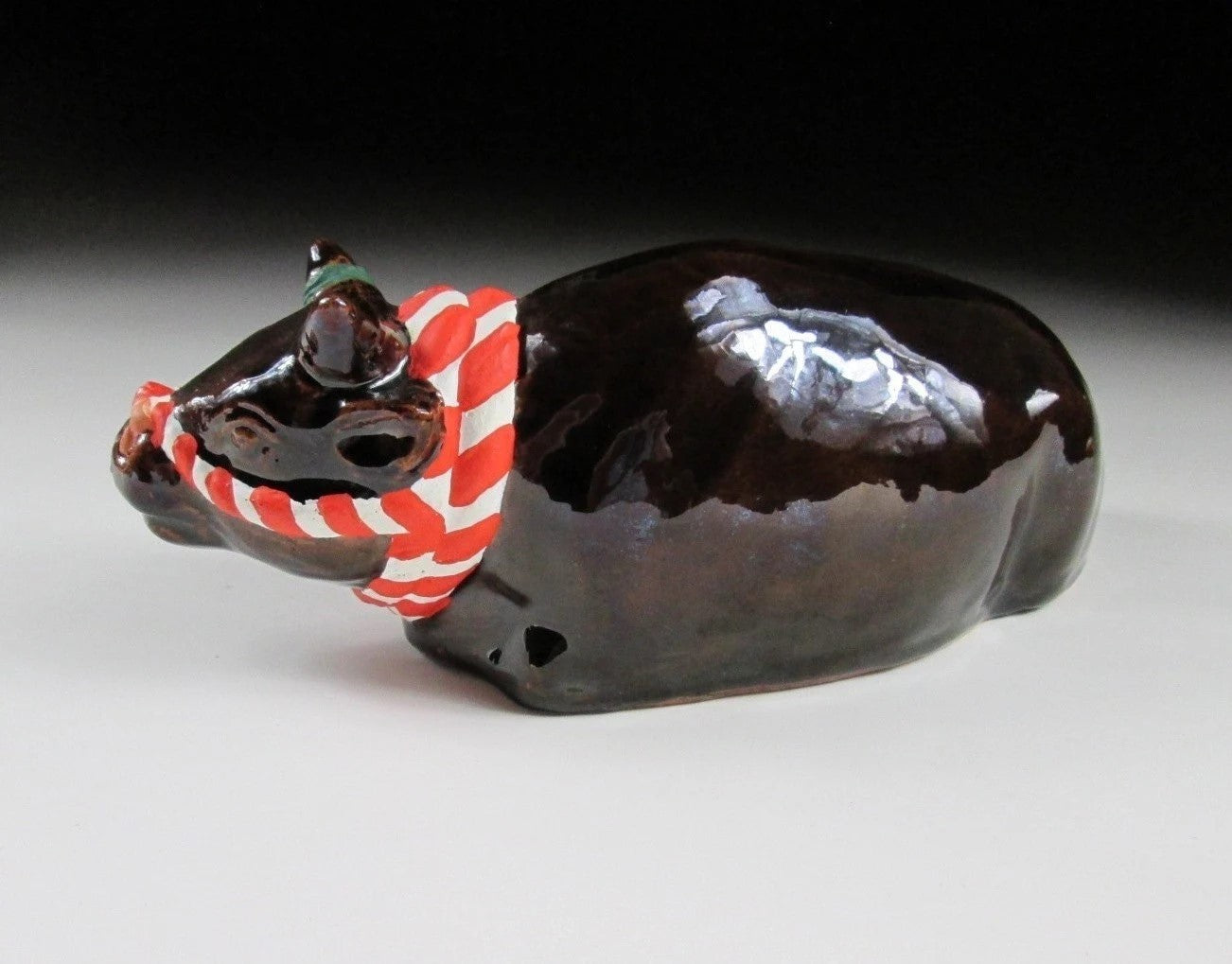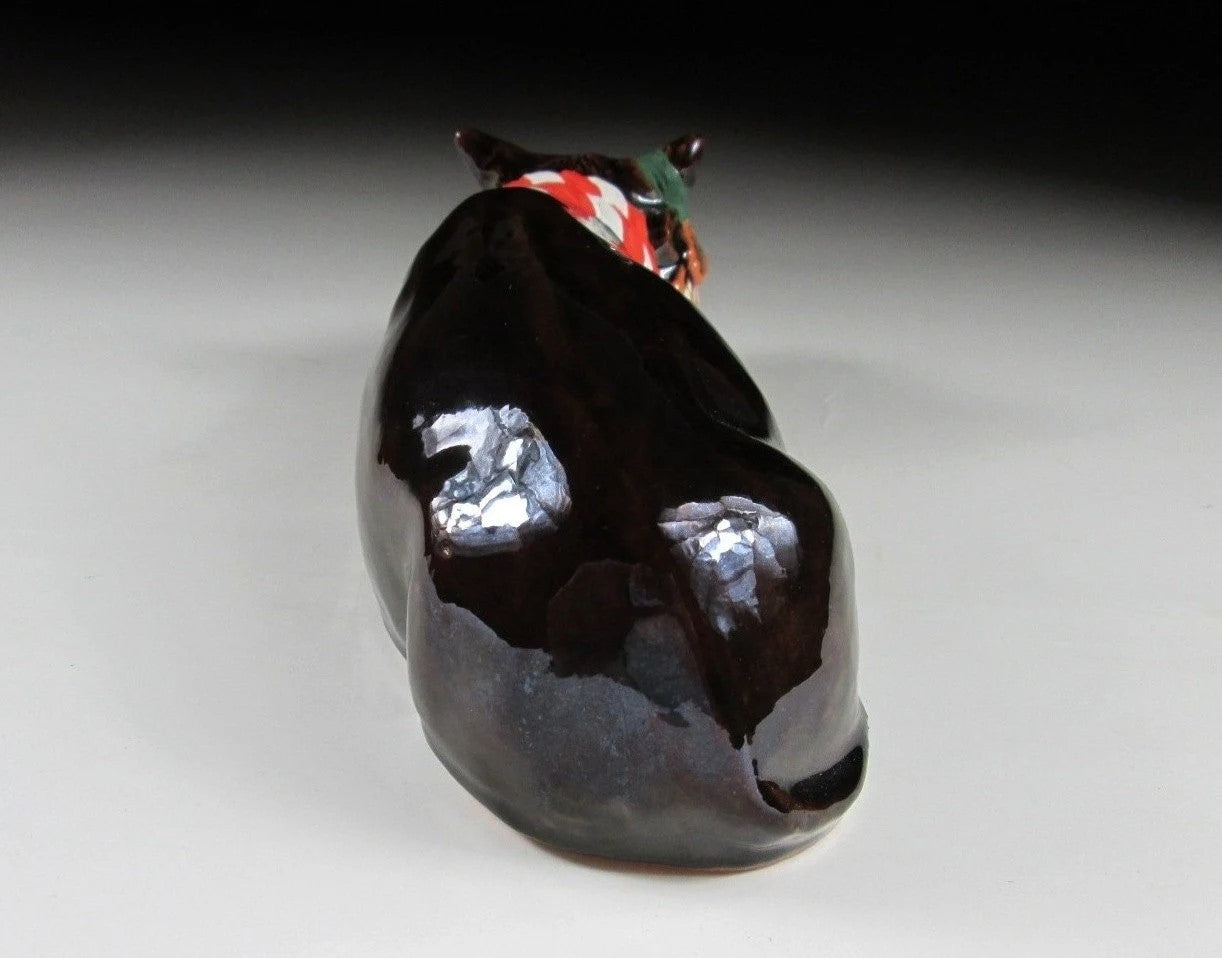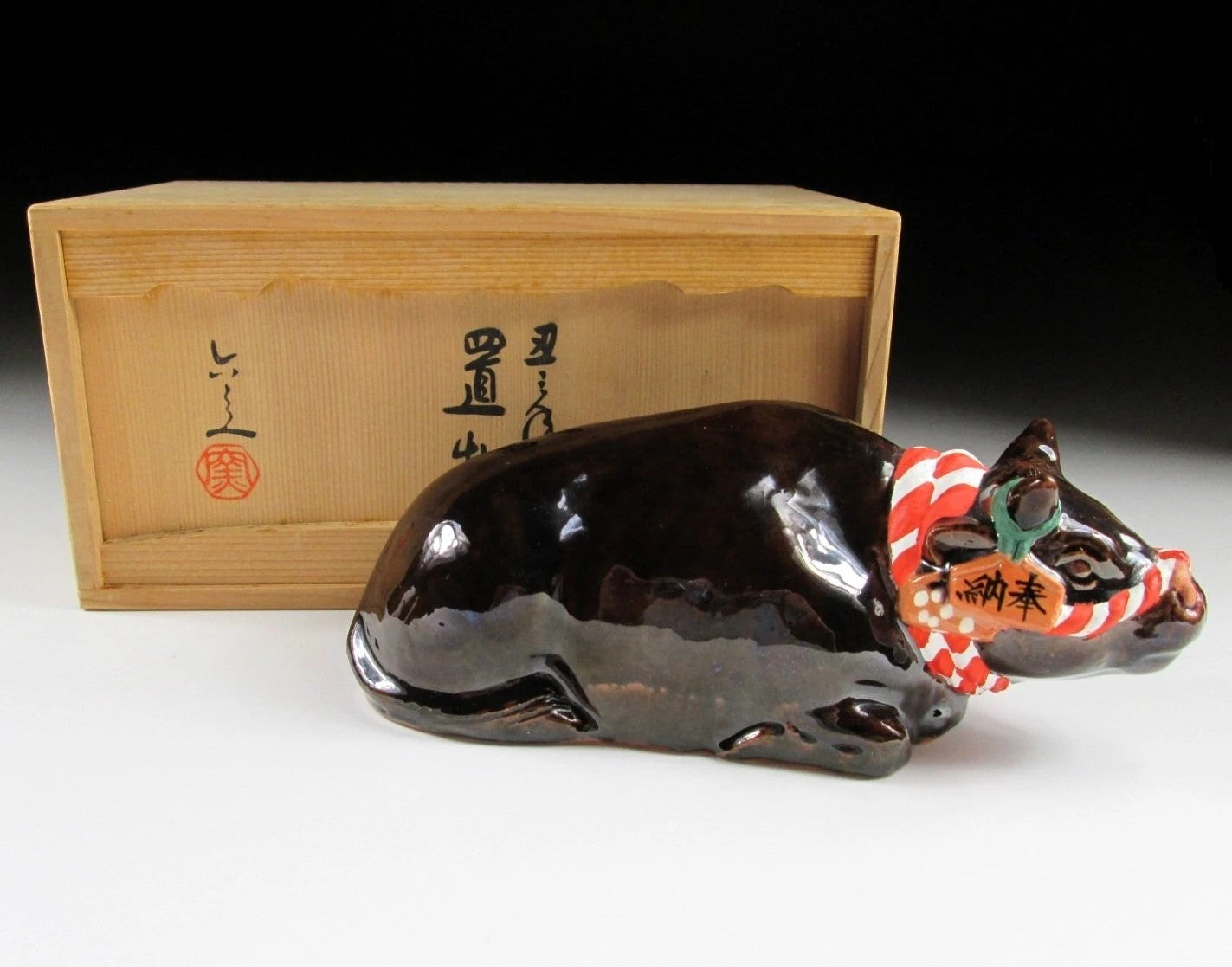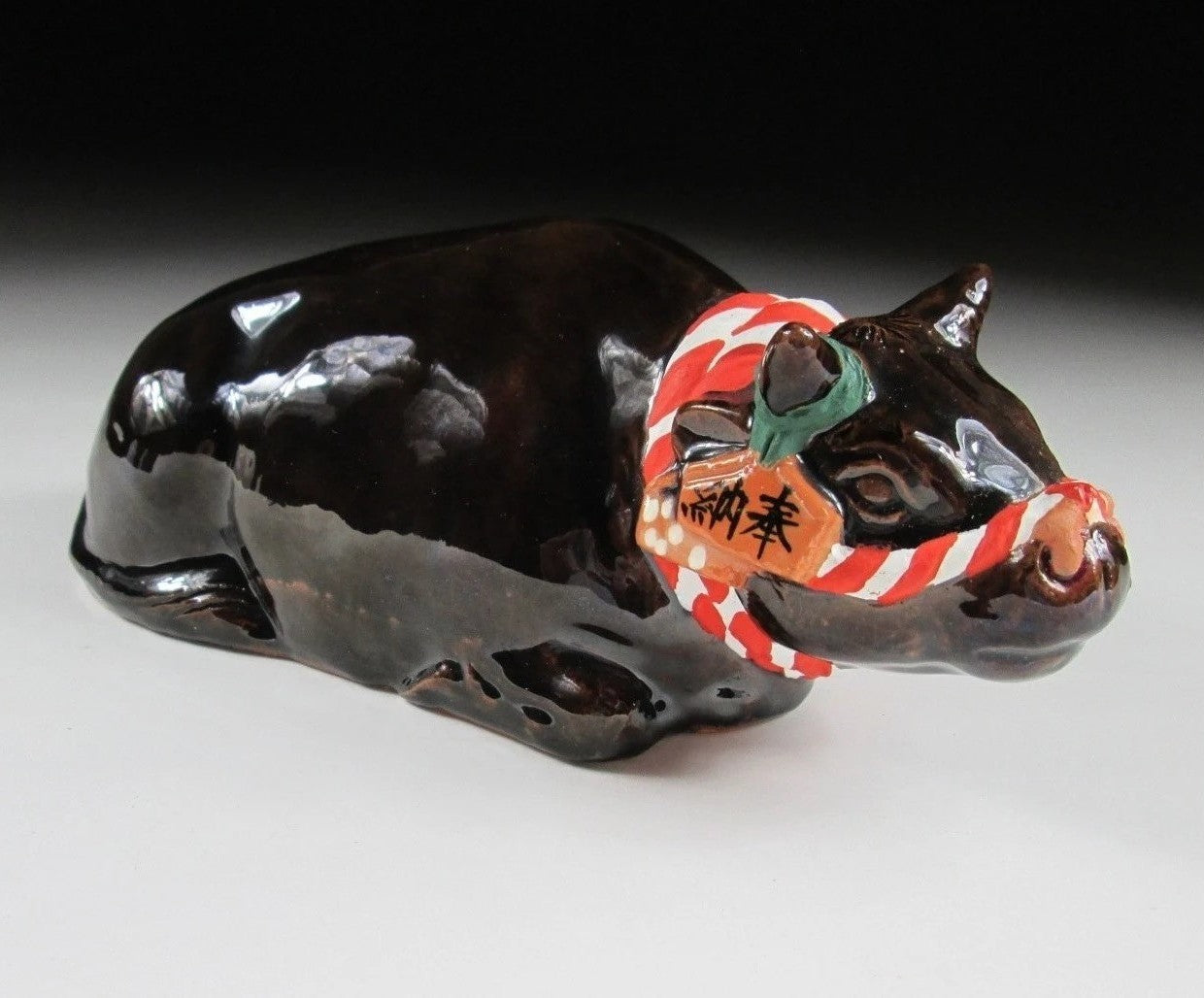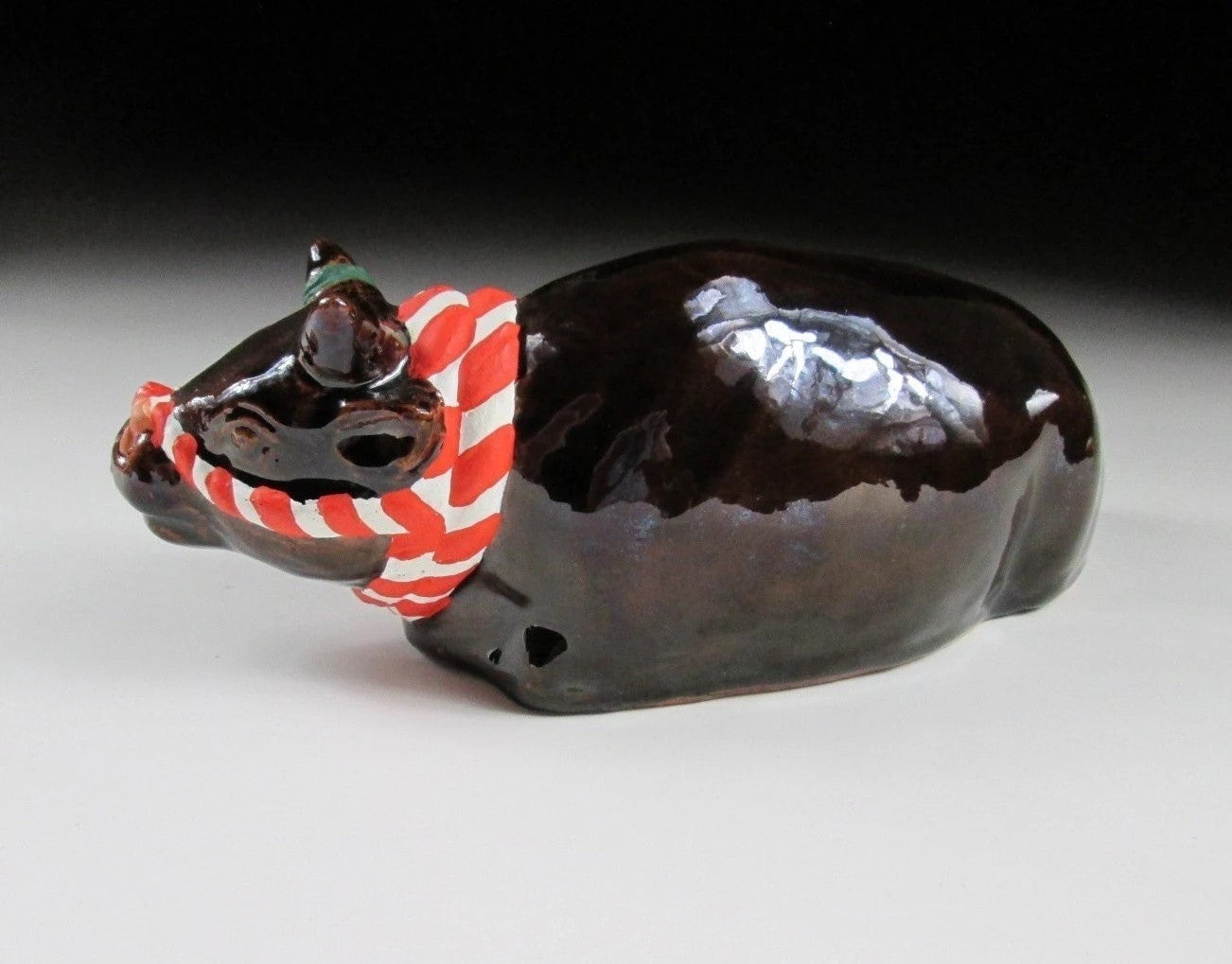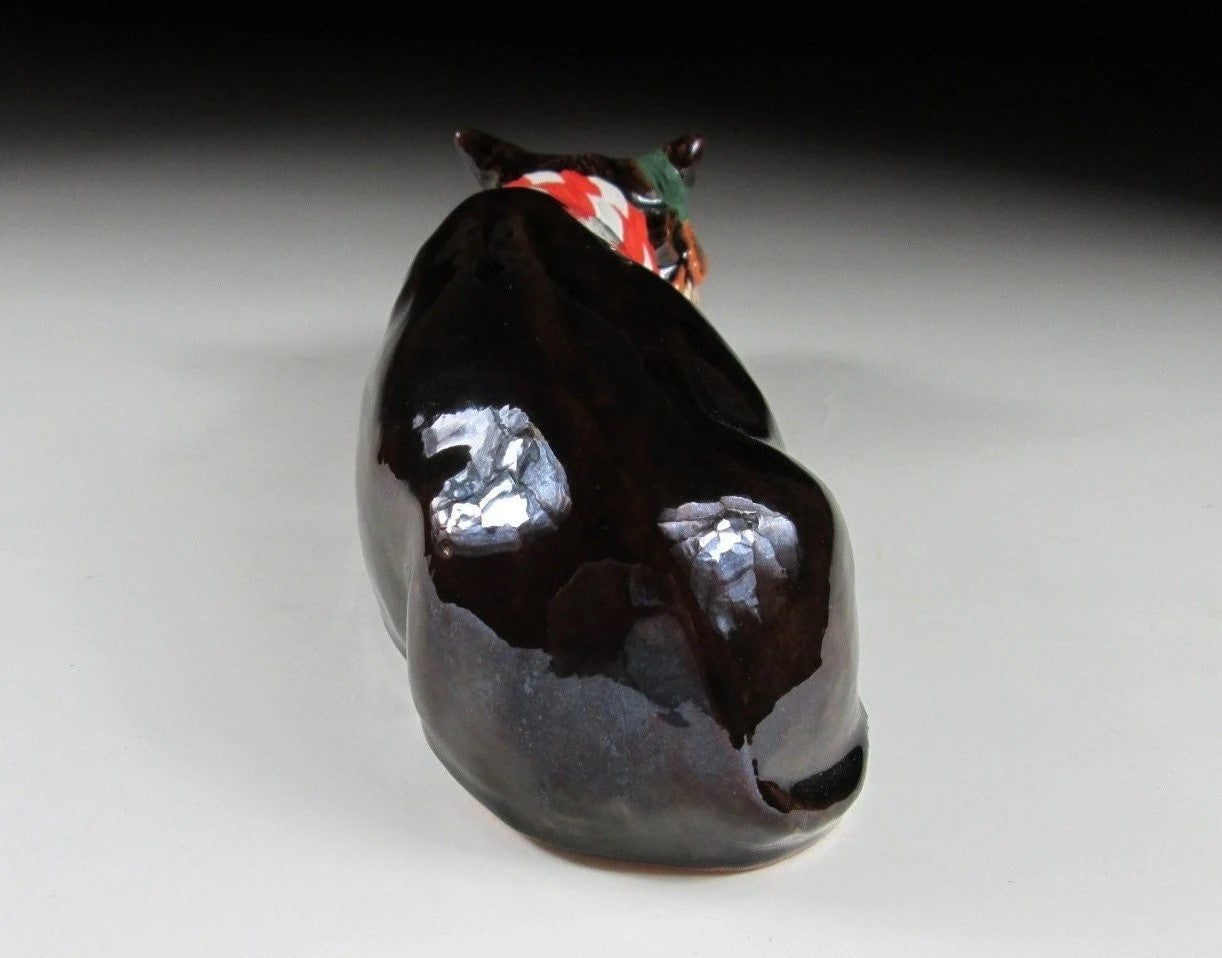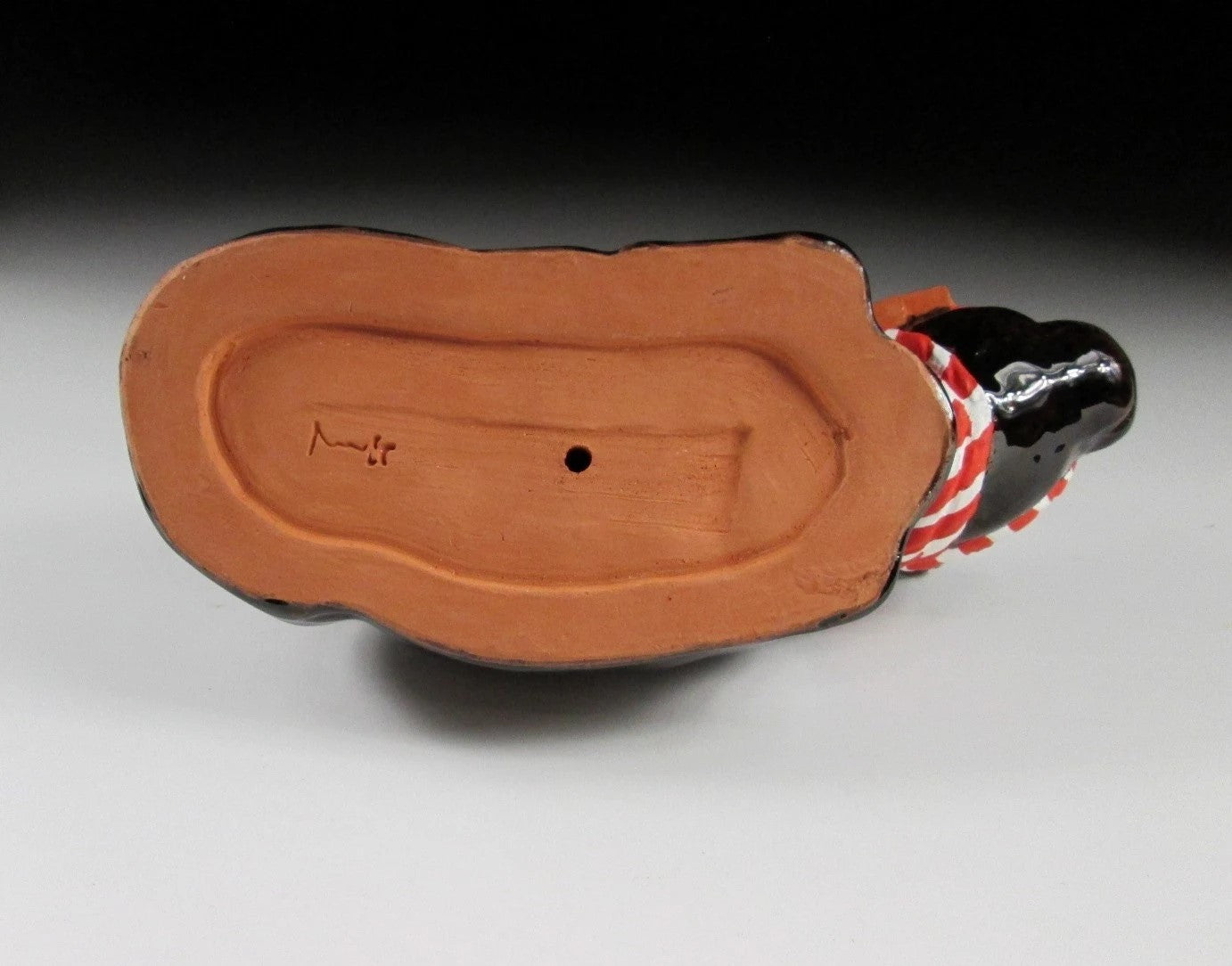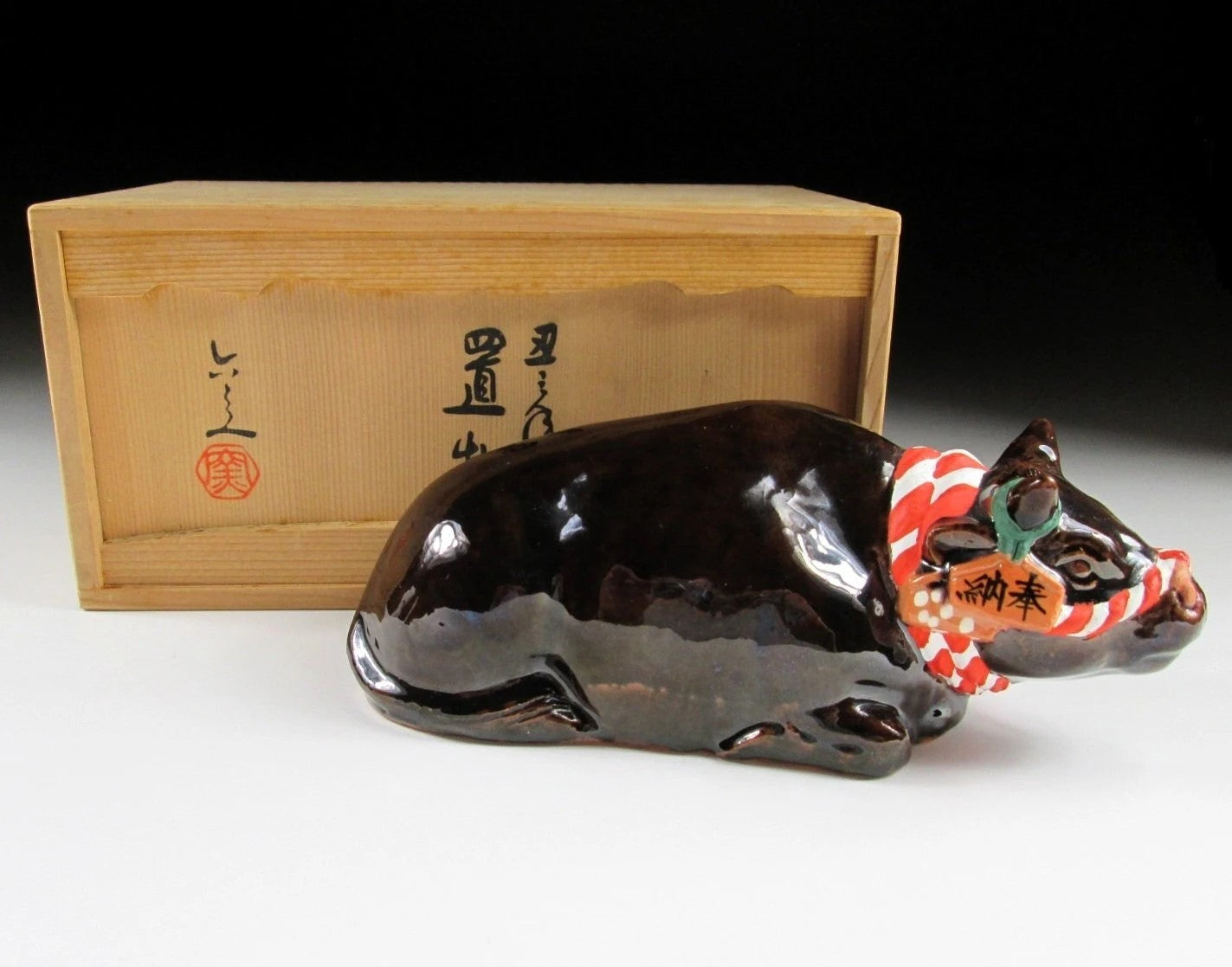Kominka Zakka
Kiyomizu Rokubei Gama Year of the Ox Okimono
Kiyomizu Rokubei Gama Year of the Ox Okimono
Couldn't load pickup availability
*SHIPPING OPTIONS VARY DEPENDING ON THE DESTINATION, PLEASE SCROLL TO THE END OF THIS LISTING FOR MORE DETAILS.
This listing is for an ox okimono made by the highly regarded and very well-known Rokubei kiln in Kyoto. This piece was made to commemorate the Year of the Ox back in 1993. The signature of the kiln can be found on the bottom, and it comes complete with the original signed wooden box. It also comes with a signed yellow wrapping cloth, as well as Japanese information about this particular item.
Kiyomizu Rokubei Gama was founded in 1771 and is now in its eighth generation. They are best known for their high quality okimono and tableware, and these works are sold at high end department stores throughout Japan. Rokubei III made a name for himself after he became inspired by Modernism and began to produce art nouveau pieces. He was greatly affected by cultural trends and this inspired him to produce more western style pieces such as coffee cups, and tea cups with handles. This was the kiln’s first foray into the tableware market. Since then they have won a plethora of awards at prestigious competitions like the Nitten Exhibition. **Fellow sellers, this information was researched by Kominka Zakka and CANNOT be used in your own listings.
The Japanese astrological calendar is known as eto in Japan, and its existence goes far back into history. Those individuals born during a particular year were said to inherit some of the personalities of that year's animal, based on traditional Japanese beliefs about the animal in question. The calendar cycle begins with the rat because the rat was the first animal to listen to Buddha's call. The twelve animals and mythological beasts are known as junishi in Japanese. The Zodiac’s popularity in Japan peaked during the Edo Era and it was then that junishi okimono production became more widespread.
Kyo-ware originated in the 17th century in Kyoto and features overglaze enamel pigments on a porcelain base. The porcelain base acts as white canvas, allowing for beautiful and superior quality designs to be painted. Kyo-ware artisans traditionally produced chawan and utensils for the tea ceremony, however contemporary potters specialize in tableware, tea ceremony items, incense holders, and okimono. Kyo-ware was designated as a traditional craft in 1977.
Sizes
Box: H.11.5cm (4.5”) x 23cm (9”) x 12.7cm (5”)
Ox: H.6.9cm (2.7”) x L.19cm (7.4”) x W.8cm (3.1”)
Condition
It’s in very good condition with no chips or cracks.
THESE ARE SHIPPING ESTIMATES BASED ON THE CURRENT GLOBAL SITUATION
**Germany, France, Greece, Spain, Poland, Austria, Slovakia, Lithuania, Slovenia: NO SHIPPING. Very strict and expensive packaging laws in place and we are not licensed to send products to these countries. We have no plan to register at this time because the process is in some cases very expensive and complicated, plus each country has its own set of regulations and application process.
**USA, UK, Canada, Australia, New Zealand, Switzerland, Norway: Airmail Small Packet (approx. 15-28 days). Combined shipping available up to 2kgs for Airmail Small Packet (please send us a message).
**Asia: Airmail Small Packet (approx. 15-21 days). Combined shipping available up to 2kgs for Airmail Small Packet (please send us a message).
**Central Asia, Middle East, South Africa, Brazil, Mexico: EMS Express 10-15 days.
**Russia: No shipping methods available.
Share

